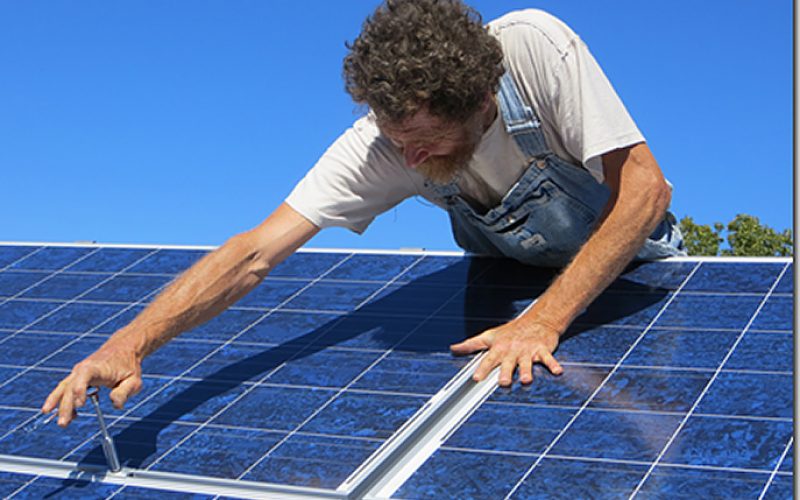
People Making Ripples: Jerry Landrum, Chair of the Eureka Springs Climate Action Progress Committee, and Gary John Carrigan Milczarek are dedicated to making solar accessible and available. Landrum brings his solar panels to power the Eureka Springs farmer’s market, and has worked on three local installations. He recently designed a simple 4-battery, 3 panel off-grid system based on electronics from Amazon.com for $1,000 – $1,500 to run LED lights, fans and a freezer. Gary has a 30 panel system producing as much power as he uses plus 50% to save for next summer’s air conditioning needs. Read a detailed account (with pictures) of this installation at his blog: johncarrigan.wordpress.com
By Amanda Bancroft
The National Resources Defense Council announced last month that their first-ever crowd funding campaign is successfully kicking off their new initiative, called Solar Schools: Powering Classrooms, Empowering Communities. They exceeded their goal of raising $54,000 in just one month, with over 300 supporters nationwide. North Carolina is the first wave of schools that will benefit from this program in early 2014, but the citizens of Arkansas don’t necessarily need to wait if enough dedicated people come together with passion and ideas, and local legislature is supportive of renewable energy savings.
Solar Schools boasts a brave new solution: “a social organizing platform and interactive guide that will help any school in the country that wants solar power to get solar power.” Their strategy for making this possible is “to tap into the enthusiasm that parents and students have for solar power, and connect them to the experts and resources that will help them make their vision a reality.”
According to an infographic by Solar Schools, if every U.S. public school saved 10 percent on energy costs by installing solar PV systems, that would be enough money to hire 16,825 new teachers, or buy 975,600 new computers, or fund 1.7 million class field trips, or install 16.7 million LED light bulbs that would in turn save an additional $4.45 billion and would remove as much carbon from the atmosphere as 281 million trees! They do note that energy savings is variable — dependent upon factors including energy price, utility regulations and incentives — so that “many” schools cannot currently save on energy costs by installing solar PV, but some schools can save more than 10 percent.
For reference, as of 2010 there are 98,817 public schools in the U.S., according to the National Center for Education Statistics. In 1929, however, there were about 248,000 public schools, but most of them were smaller and were eventually consolidated. So if every school did save 10 percent, the approximately 17,000 hypothetical new teachers would be shared amongst roughly 99,000 schools, but every school could get extra field trips, computers, or energy-saving lights.
 Here in Arkansas, Solar Schools’ online platform will be able to help schools build a team, identify stakeholders and decision makers, design their solar system, secure project approvals, financing and installation management. They can also connect to other project leaders and keep track of events and messages, similar to other social media platforms. Users can ask questions regarding topics such as third-party solar financing, and receive answers from other users. This online resource is currently in its pilot program phase for implementation as early as January 2014, but the beta will be sent to qualifying communities 6-12 weeks later. Besides the actual panels, the project hopes to “spark the interest of young minds in science, technology, engineering and math.” Solar Schools: we’re watching you from Arkansas, and we’re ready to shine!
Here in Arkansas, Solar Schools’ online platform will be able to help schools build a team, identify stakeholders and decision makers, design their solar system, secure project approvals, financing and installation management. They can also connect to other project leaders and keep track of events and messages, similar to other social media platforms. Users can ask questions regarding topics such as third-party solar financing, and receive answers from other users. This online resource is currently in its pilot program phase for implementation as early as January 2014, but the beta will be sent to qualifying communities 6-12 weeks later. Besides the actual panels, the project hopes to “spark the interest of young minds in science, technology, engineering and math.” Solar Schools: we’re watching you from Arkansas, and we’re ready to shine!
Ripples is a 100% solar-hosted website that includes a blog, newspaper column, resources and services for individuals and non-profit organizations. Read more on these topics and others at www.RipplesBlog.org.










